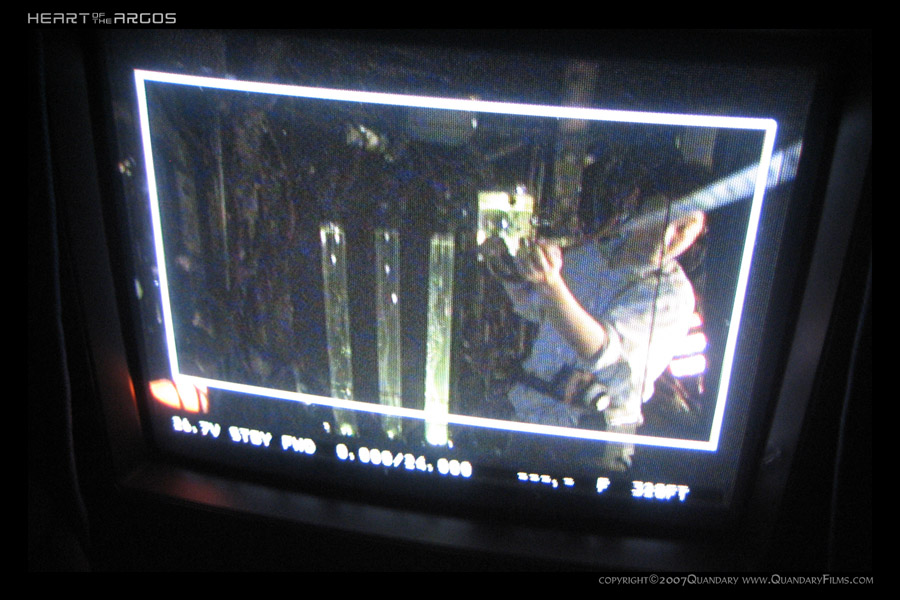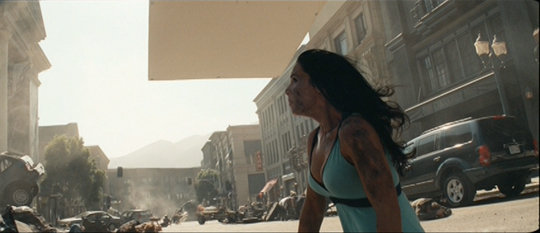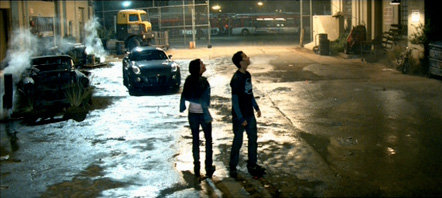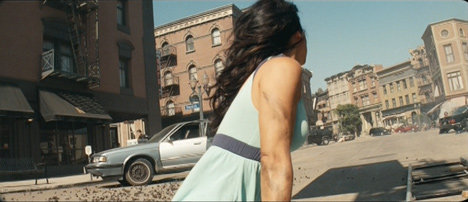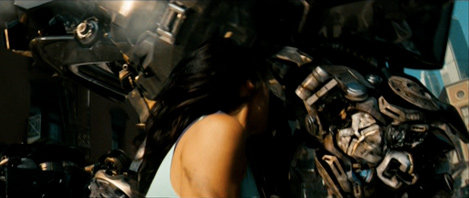-
Posts
4,560 -
Joined
-
Last visited
Everything posted by Satsuki Murashige
-
First, you should identify exactly where the focus problem is occurring. 1. Diopter - Check that you have the set the diopter (eyepiece focus) correctly for your eye. The diopter is the rotating focus ring on your eyepiece. If this is incorrectly set, then you won't be able to properly judge focus by eye. To make sure it's in focus, remove the lens from the camera and point the camera at bright light. This will illuminate the focusing screen, which will have crosshairs or framelines on it that you can focus on. Adjust the diopter until the markings are sharp. Then don't touch it! You can put some tape on it, so that it doesn't move. Readjust the diopter when your eyes get tired or at the beginning of every day, as your vision will change under these conditions. You can also adjust the diopter with the lens on as long as the image is way out of focus - in that case, zoom all the way in and defocus the lens first before messing with the diopter. 2. The camera's lens mount - If the camera's lens mount is out of spec, then your zoom lens will not stay in focus as you zoom in or out. If the mount is out of spec, then that means the distance between the mount and the focal plane is off and needs to be readjusted by a technician. This distance is called the flange focal distance (FFD) and is specific to the type of mount your camera has (I'm guessing c-mount in your case). You would have to send it to a technician for repair if this was the case. Fortunately, this is fairly easy to check. Working in a bright, well-lit environment, reattach the zoom lens to the camera body and set the camera on a tripod. Zoom all the way out and open the aperture all the way (wide open). Pick a stationary subject with a lot of fine detail, zoom in all the way, and focus on it. They slowly zoom out all the way. If the subject still looks sharp, then your FFD is fine. A "siemens star" focus chart can be very helpful for this procedure, though not necessary. You can print one out here: http://www.panavision.com.au/Information/Charts.htm Once the FFD is properly set, you shouldn't have to readjust it again unless you drop your camera or subject it to some other violent trauma. With video cameras on the other hand, the FFD needs to be adjusted on a constant basis - this is known as "backfocus" adjustment and is done in the field. *BTW, this is the procedure you should always use to focus a zoom lens - always zoom in and open the aperture to focus before zooming out to your desired focal length. 3. The lens mount - If the mount on the lens is out of spec, then the lens will stay in focus during zooming, but distance markings on the focus barrel will be inaccurate. If you only plan to focus by eye, this is not a big issue. But if you want to focus with a measuring tape, then you'd need to get the lens mount adjusted (collimated) by a technician. So first, let me explain: Your lens should have distance markings in feet or meters on the focus barrel. To tape focus, you would measure from the camera's focal plane to the subject and set the focus barrel of the lens to the distance that you measured. The focal plane (or film plane) is where the film runs through the gate, usually marked on the side of the camera with a white vertical line drawn through a circle. Given that the diopter, FFD, and lens mount are all properly set, eye focus and tape focus should match exactly. When this is the case, then you can rest assured that any further focus problems are strictly due to operator (or AC) error! :)
-

Measuring focus for crane/jib work
Satsuki Murashige replied to Satsuki Murashige's topic in Camera Assistant / DIT & Gear
The Disto works pretty well, I got the A5 model which ran me $450. :ph34r: It's the one with the optical viewfinder so you can use it for day exteriors. I bought it for a steadicam shoot which basically paid for itself so I didn't feel too guilty about spending so much. If you decide to get one, laserstreet.com has a deal where you can get a free Pelican case with it as well as the soft case. I did a lot of research but wasn't able to find one cheaper. On the other hand, you might be able to rent the meter out from a local camera rental house to make it pay for itself when you're not using it. The Disto can be a little slow (like up to 5 seconds) to give you readings in bright light which might be an issue. The viewfinder is also puny, but it works. It's great for steadicam at distances over 10' when you can't use a soft tape, and also for quickly measuring hallways and corridors if you're doing a shot that requires holding someone in focus as they walk up or down. I'm sure you'll be able to find all sorts of uses for it. I've also had a chance to play with the Hilti PD32 which is their equivalent model (at the same price). The Hilti is quite a bit smaller, seemed easier to use, and had a better viewfinder, but you can't store as many readings (I think the Disto can retain up to 20 vs. 4 for the Hilti). This hasn't really been an issue for me so far, as I've only need up to four at one time - after that, I start to forget what the hell I've measured! The PD32 has been discontinued as far as I can tell, so you might be able to find a deal for one of those on ebay. -

Cinematographers BBQ in SF?
Satsuki Murashige replied to Jonathan Bowerbank's topic in San Francisco, CA (US)
Dude, what about the feature in San Diego? Did it get pushed back? -
The lighting in the bedrooms look especially good, I like the little spots on the kids to make them pop while still keeping that feeling of night. Actually the one shot I have a problem with is the MCU of Dad peering around the corner - it's supposed to be a night interior but the window behind him is blown out! Maybe it's motivated, but it looks a bit sloppy to me. Other than that, nice work as always Greg.
-

A Top Name Cinematographer on an Ultra low budget
Satsuki Murashige replied to Tim Terner's topic in General Discussion
My first film job was on a ultra low budget feature shot by Barry Stone, CSC. The only reason I don't call it a no-budget film is because we were shooting 16mm B&W reversal (and we shot A LOT of it) but it was all shot in the director's tiny apartment and on the city streets and rooftops with no permits, mostly handheld. The crew was almost all volunteer, we only had a paid focus puller most days. No genny, so the lighting kit was Dedos, small fresnels, and a few open face lights. I learned a huge amount about what could be done with simple tools and still look amazing. Watching our camera original footage projected on a bedsheet a few weeks later was a revelation. I remember one time we were shooting in the apartment hallway - it was a scene where this homeless man bangs on the hero's front door and eventually gets tossed down the stairs. There were only a few bare practical bulbs lighting the hall. Barry said, let's shoot, we'll push the stock (we were shooting Double-X neg for this scene). I was kind of thrown by this and said to him, why not put a light by the base of the stairs since we could easily hide it and bring up the ambience. But he said, no, I want the texture of the pushed stock in this scene. So we pushed the whole scene, and he was right, it looked great. Much of the scene was shot with an Aspheron on a wide Superspeed to get a super-wide perspective and also to get the characteristic Superspeed "ring" flare around the practicals. We also did a fast reverse dolly shot with Barry sitting in a wheelchair, looked great. So sure, who the DP is makes all the difference in the world, regardless of budget. The hi-caliber DPs also know when to put their foot down when the director or producer's expectations are unrealistic given the resources available. And sometimes they get bit when they don't put their foot down and everyone sees it in dailies which is a bummer. -

Measuring focus for crane/jib work
Satsuki Murashige replied to Satsuki Murashige's topic in Camera Assistant / DIT & Gear
Thanks Chris. I've since purchased a Disto, so I'll give it a try on my next gig. BTW, why do you recommend a tennis ball as opposed to a flat target plate? Is it so you can take off-axis readings if you need to? I guess with longer lenses and shallower depth, you probably could tell critical focus from the video tap in a pinch, though I wouldn't rely on it. Interestingly, I've found that the Zeiss Superspeeds "pop" in and out of focus more visibly than newer Zeiss and Cooke glass. I haven't shot with Ultra Primes or Master Primes yet but this seemed to be the case with the Ultra 16s, DigiPrimes, and S4s. There could have been other factors at play I guess, but I'm wondering if this generally jibes with anyone else's impressions. -
R... E... D. (shhh!)
-

Cinematographers BBQ in SF?
Satsuki Murashige replied to Jonathan Bowerbank's topic in San Francisco, CA (US)
If we only allowed camera dept. in, it'd be a very small get together! Besides, we'd need you guys to actually lift the grill, set it in place... :) -
Well, I know that Sony's unveiling a new LCD HD engineering monitor. I gripped on the shoot that was supposed to provide footage for the monitor at NAB (I was only there for the Fort Point/Golden Gate Bridge stuff). They were shooting with an F23 and the wide DigiZoom and using mostly natural light. The Sony clients were really interested in seeing what the extremes of highlight and shadow detail the camera could hold, so it could be an interesting presentation to check out. The monitor was on set and actually had rather milky blacks, not surprising for an LCD I guess. But for $20k I would have thought it was going to be better.
-

Measuring focus for crane/jib work
Satsuki Murashige posted a topic in Camera Assistant / DIT & Gear
Hey guys, So I've recently had a chance to pull focus with a Jimmy Jib at 25' extension. It was an F900 shoot with the Pro35 and Zeiss Superspeeds. We ended up using a 35mm lens wide open on the jib to capture swooping shots of a theater audience and focus was critical. You can see the finished product here: http://www.ethosedit.com/sony/Buzz_Preview_Mix_022108a.mov The shot that finds the girl and follows her as she stands up, walks down the aisle and exits toward camera was the hardest shot for me technically (also since we shot all the rehearsals) but I'm pleased to say they had good takes of every shot that were spot-on sharp. What's bothering me though is that with HD, I could sit by the video tech's tent and grab quick eye focus marks from the big HD monitor as the jib op. was practicing his moves, which were never the same from take to take as he was tweaking the movement. In fact, I got so used to this that I rarely pulled out my measuring tape on the whole shoot. But if I had to pull strictly based on estimating distances, I would have been screwed. So my question is: what tricks do you focus pullers use to grab marks for big jib/crane shots on a film job? -

Focus Pulling for 35mm
Satsuki Murashige replied to Zac Halberd's topic in Camera Assistant / DIT & Gear
Even with two mags, if they're finishing rolls in one or two takes, you'll be constantly in the bag. And the Aaton 35mm mags are among the most complicated to thread, nothing at all like the XTR coaxial mags. Never worked with one myself, but I'd rather load Arri or Panavision mags any day. -

My Ambien CR commercial
Satsuki Murashige replied to David Mullen ASC's topic in On Screen / Reviews & Observations
Hi David, I've been working on a bunch of commercials lately, both shooting and crewing, and this was the case on all of them (all of which were video shoots, BTW). Must be really disappointing from a feature film DP's perspective where you have a lot more control over the final image. Then again, you get paid a lot more on commercials and you usually get to go home after 10 hours. Most of the DPs, gaffers, and techs that I know who work on commercials regularly are sort of resigned to this situation. -

Lumet's proclamation of the death of film at NYFF
Satsuki Murashige replied to ML Scott's topic in 35mm
I think Lumet is a great director and one of the most thoughtful in terms of how his films are staged and shot. But I also think some of his comments on technical matters are just plain wrong and in some cases rather embarrassing because he insists that they are true. I don't think there's anything wrong with pointing this out. -

The Egyptian Music Video
Satsuki Murashige replied to Jamie Metzger's topic in San Francisco, CA (US)
Wow, that sounds terrible. :angry: That director and client team who said that they'd "settle for a RED" are out of their minds! You're better off without those jokers. If it's any consolation, they probably won't be around for very long with attitudes like that. I guess all you can really do in that situation is stick to your guns, give them a fair rate and be ready to walk away if they won't pay. I know it's a very hard thing to do if you're broke. I think one of the problems you're facing is that there are several strata of film workers here: the high end union pros who make good union wages and work mainly on commercials, the mid-level guys who own a lot of gear and stay afloat with docs, music videos, interviews, adult, etc. and then the no-budget film student types who grab up whatever is left on craigslist. The producers and clients also fall into the same categories. It can bad news when those boundaries get crossed. I think you're problems come from the fact that you're straddling the mid-level and no-budget categories, and that the mid-level work is a lot harder to find than the no-budget stuff. Maybe it's time to stop shooting the no-budget stuff altogether and stick to AC or grip/electric on mid to hi-end shows, then only shoot mid-level stuff when it comes? I'm kinda in the same boat myself, I hate having to ask my friends who deserve to be paid to work for free or practically for free when I DP stuff, so I won't do those projects anymore. Anyway, whatever you decide, good luck man. You've got a lot of talent and a great attitude, so I'm sure you'll come out alright wherever you decide to work. We still gotta have that BBQ though. -

Lumet's proclamation of the death of film at NYFF
Satsuki Murashige replied to ML Scott's topic in 35mm
Well, Sidney Lumet isn't exactly the most technically savvy film director out there. In his book "Making Movies" (which is otherwise a great read) he states that the three primary colors in lab timing are "red, YELLOW, and blue." :blink: Don't take his comments too seriously. ;) -
If I were you, I'd go to a local CompUSA or Apple Store to test drive a glossy screen for yourself before committing. Personally, I got a 17" MBP with the glossy screen because I use it in controlled lighting situations most of the time, but I can see how a matte screen would be better if you were outdoors a lot. Either way though, don't expect the MBP's LCD to be color correct even after calibration. I have my MBP set up next to a 23" Cinema Display in dual screen mode, both calibrated with a PanTone Huey Pro (pretty cheap, but it works okay) and the Cinema Display is far more saturated especially in the greens, reds, and yellows. I'd imagine that a proper CRT broadcast monitor would also produce a very different picture than either display, but that's not really an option with the MBP because of the lack of a PCI slot. * BTW, I hope you're not paying Apple to install that extra gig of RAM - it's way cheaper to buy memory from an online vendor like Newegg and install it yourself. ;)
-
I think the original poster meant that focus would be easier to see for the operator, not that it'd make the 1st AC's job easier... It sounds like he's coming from a still photography background where you generally judge focus by eye through the viewfinder. On most SLRs, the iris will remain wide open to aid in focusing even with the aperture ring on the lens physically stopped down - the lens then stops down as the shutter is released. For a focus puller, T1.4 is a pretty brutal stop to work at especially in 35mm, but we'll do what we have to do to get the shot if the DP wants that look. Most modern cine lenses like the Zeiss Master Primes (T1.3), Ultra 16's (T1.3), Digiprimes (T1.6), and Cooke S4s (T2) are just as sharp and contrasty wide open as they are stopped down. Older lenses like the Zeiss Superspeeds (T1.3) and Standards (T2.1) are noticeably softer and less contrasty wide open. Of course, some DPs prefer that softer look.
-
Sure, but I think what the stills show is the difference in approach the filmmakers took in controlled vs. uncontrolled lighting situations. In the night exterior, the original plate is very close to the final shot in color and contrast. In the day exterior, they instead just shot it flat and used the DI more extensively. I think that at least somewhat answers the question of how much of the look of the film was created in DI vs. in camera.
-
-
-
-
The Transformers DVD has a special featurette that has comparisons of uncorrected plates for effects shots with the final color graded composite. They give a very good indication of what kind of color correction was done in the DI - basically, increased contrast, increased color saturation, and a warmer tone overall. A lot of the yellow/blue color palette you were talking about is in the negative on interiors, night exteriors, and basically whenever they were able to control the lighting. On those huge day exteriors with multiple handheld cameras, you can tell that they had to shoot in natural light with little to no augmentation, so they probably went further with color correction in the DI to match the rest of the footage. * You could probably get a similar effect photochemically by printing onto a high contrast, high color saturation print stock like Kodak Vision Premier. Original plate: Final shot:
-

leaving town to shoot a feature
Satsuki Murashige replied to David Mullen ASC's topic in In Production / Behind the Scenes
Sweet, congrats on the job David. Sounds like you're starting to specialize in high school themed films... But hey, it's the producers of "Juno", so I guess it could end up being a huge success for you. Good luck! I'm just starting out my career, but I'm also beginning to see what you mean about not counting on upcoming jobs until they become real. I've been doing AC or lighting PA jobs on shorts, commercials, and industrial interviews, so for me I only know for sure a few days before, sometimes the day before. But even my worst day on set is better than working in an office or scooping ice cream for a living, or so I keep telling myself. Jon, be careful that you don't get taken advantage of on that feature. I don't know what working conditions are like on Korean shoots generally, but I've heard some specific horror stories about Korean crews not being well taken care of by their producers, being forced to do crazy hours in some dangerous locations. It could have been an isolated incident and I know that stuff happens here too. But better safe than sorry, if you know what I mean. -

Cinematographers BBQ in SF?
Satsuki Murashige replied to Jonathan Bowerbank's topic in San Francisco, CA (US)
That's not really surprising - the Cooke 18-100 only covers academy 35, not Super 35. Were you able to zoom in and get rid of the vignetting on the ground glass? I'm sure you had fun handholding that beast. :) Matt, at least you're with us in spirit - I'll think of you every time I take a bite of spare rib. BTW, the weather's been really terrible around these parts lately - kinda reminds me of Phil's constant rants about London...


